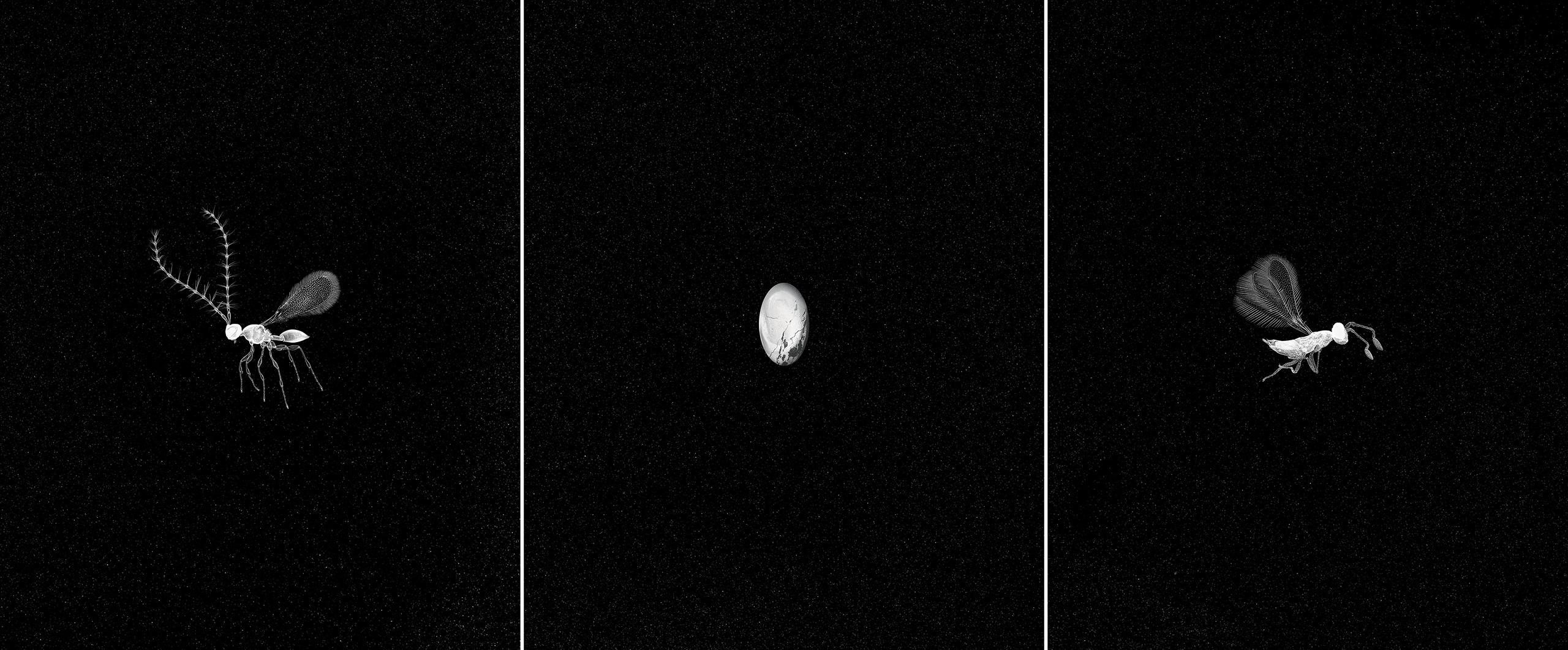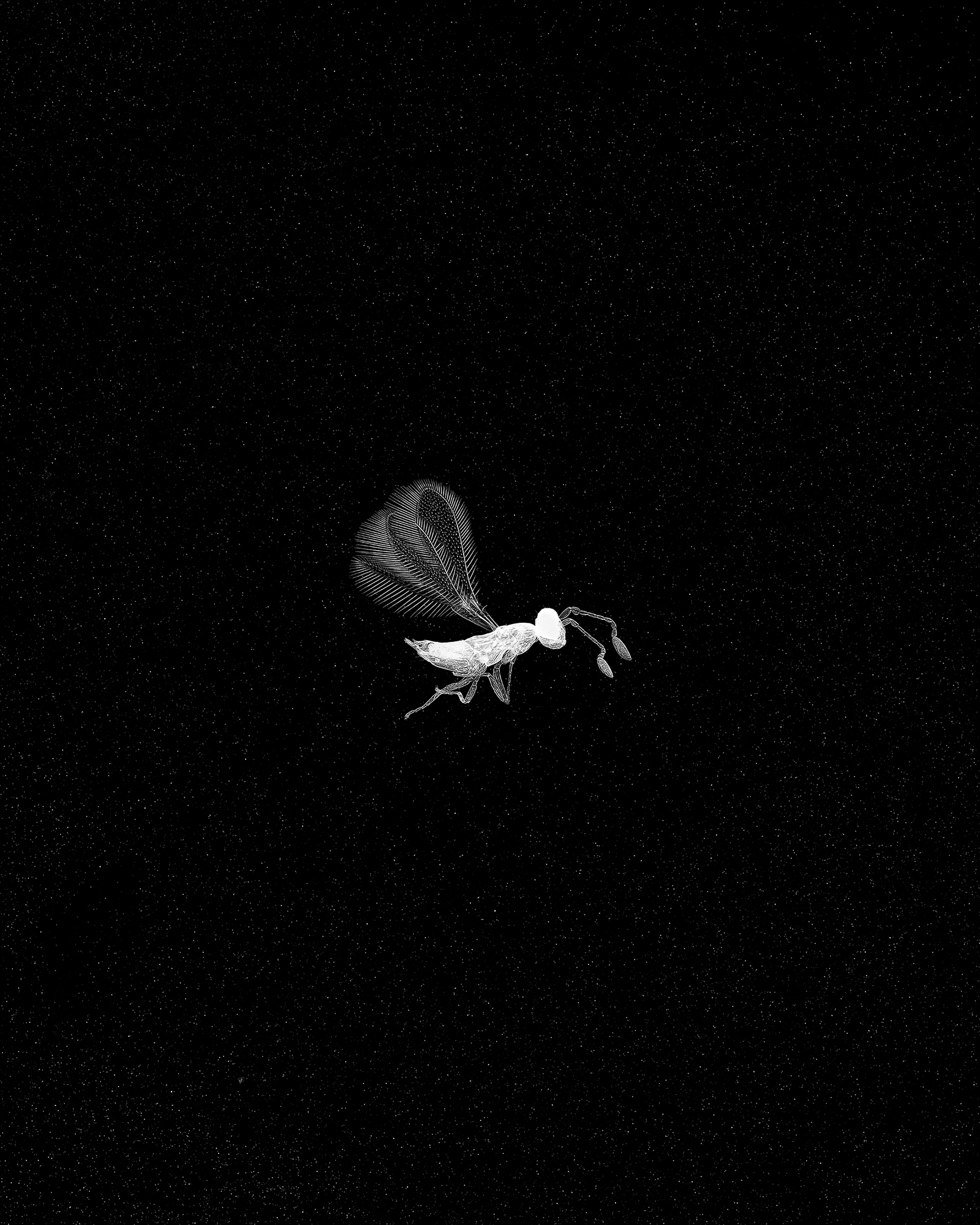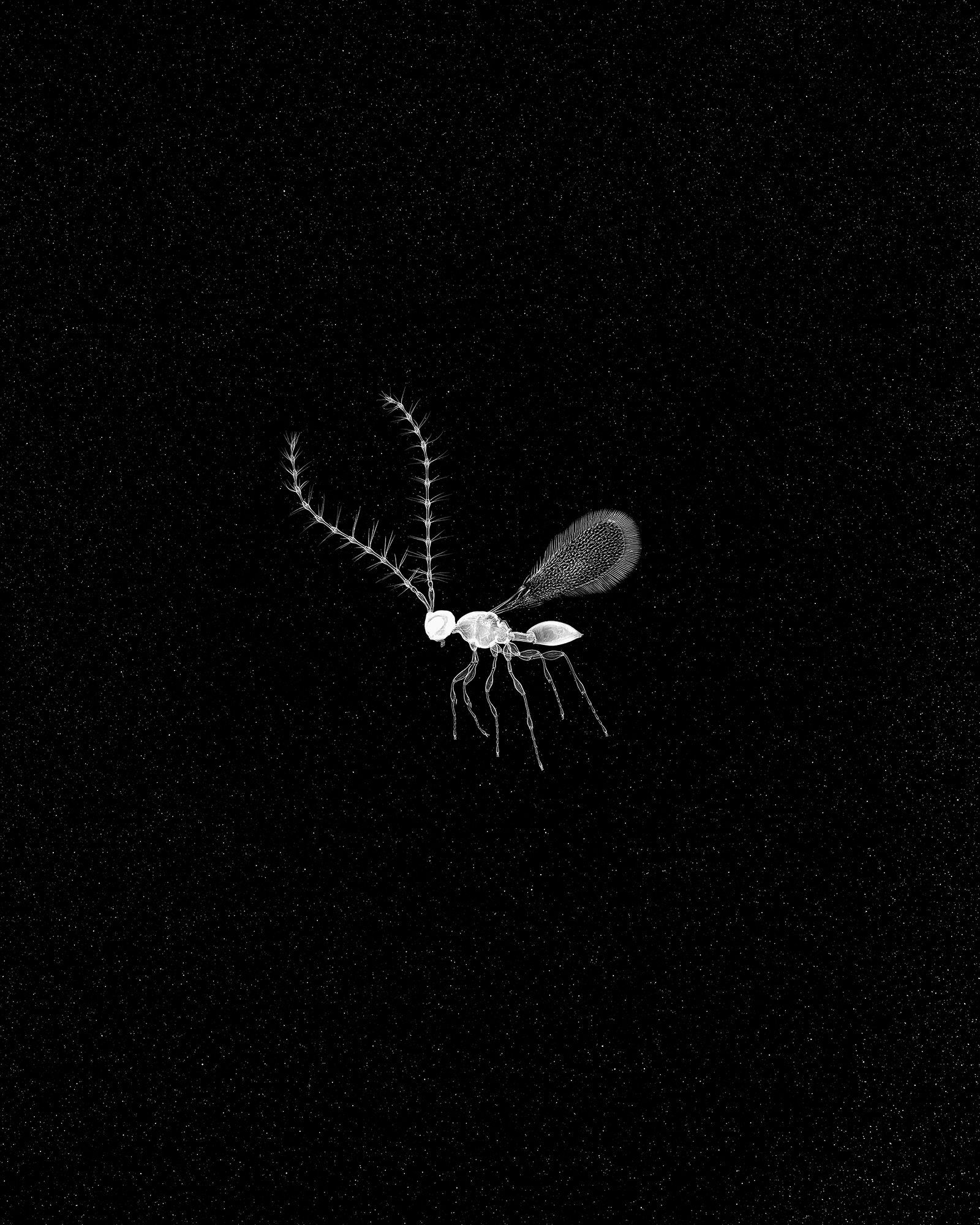inderwelt
2022
![]()
inderwelt, 2022, convex oval mirror made from a piece of the Campo del Cielo meteorite, photographs of 19th-centuryfairyfly (Mymaridae) microscope slides, archival pigment prints on Hahnemühle Photo Rag Baryta paper, triptych, 130 × 320 × 6 cm
The Campo del Cielo (Sky Field) meteorite is 4.6 billion years old, i.e., it came into existence at the same time as the Solar System. It is the most ancient known object to have been found on the planet and is believed to have fallen to Earth about 5,000 years ago. Fairyflies are the smallest insects in the world and are imperceptible to the human eye. Their size ranges between 0.15 and 1 mm. They weigh 0.02–0.03 milligrams. They feed on plant nectar and pollen and play an important role in pollinating plants. Fairyflies have lived on Earth for more than a hundred million years and their lifespan is generally 1–2 days.
The triptych is a composition of three black-and-white negative photographs of 19th-century microscope slides of fairyflies (Mymaridae) and a convex oval mirror made from a piece of the Campo del Cielo meteorite. In the photographs, the background, which resembles a starry sky, is purely dust, namely the negative image of dust grains on the antique microscope slides. The title inderwelt, intentionally written in lowercase, refers to Martin Heidegger’s notion In-der-Welt-sein (Being-in-the-world) and his anthropocentric worldview expressed in his Being and Time and The Fundamental Concepts of Metaphysics. In Heidegger’s interpretation it is only the human being who has an actual world: “The stone is worldless, the animal is poor in world, man is world-forming.” (MH, 1929/1930, 1983, p. 185) For Heidegger, the human being is the only being capable of inhabiting a world, a space of its own creation, and of making meaning within that space. Heidegger argues that the human being is uniquely capable of projecting meaning and understanding onto the things that it encounters. He disregards the fact that objects exist even without human presence and human perception. Moreover, he simply leaves vegetal existence out of the equation.
Humans are not the only actors, and the world is independent of our honored observer’s role. The world is full of phenomena that act and are acted upon, from the smallest particles to the largest galaxies. Plants, animals and minerals, oceans and storms, cultures and societies, technologies and machines can all act and be affected by other actors. Therefore the mirror chiseled from a meteorite primarily functions as a moral institution, while at the same time it is also an optical machine, a tool which will go wrong in the course of time due to corrosion, similarly to Heidegger’s objects. Looking into the meteorite-mirror we ourselves turn from a subject into an object being-in-the-world, an object to be examined and evaluated.
![]()
inderwelt, 2022, detail
![]()
inderwelt, 2022, detail, convex oval mirror made from a piece of the Campo del Cielo meteorite, installation view: Hypothesis: Everything is Leaf, Robert Capa Contemporary, Budapest, Hungary, 2022
“The background in the photos, which is reminiscent of a starry sky, is purely dust, since the photograph of a microscope’s glass plate is reversed into negative making the stains of dirt visible in this enlargement and this size. On the one hand, the three images open up a dazzling temporal dimension with the meteorite, as well as with the insect species that has lived on Earth for a hundred million years, while on the other, it presents the alienness that surrounds us and is invisible to us, those living or non-living matters which we ignore because of our limited anthropocentric attitude. We practically don’t even have a way of communication with the non-human, thus we do not hear the voice and the language of the non-human and neither do we understand it. The theoretical and practical framework of In-der-Welt-sein is defined by our blindness to our non-human environment. Having positioned ourselves in our comfortable and hierarchic dichotomy (I vs. nature, man vs. environment, subject vs. object, where the first is always emphatic) we have subdued what is not us in such a way that we haven’t the slightest idea what not us is.” Text by György Cséka, exhibition review, A mű, november 2022
![]()
inderwelt, 2022, installation view: Hypothesis: Everything is Leaf, Robert Capa Contemporary, Budapest, Hungary, 2022
![]()
inderwelt, 2022, installation view: Hypothesis: Everything is Leaf, Robert Capa Contemporary, Budapest, Hungary, 2022







